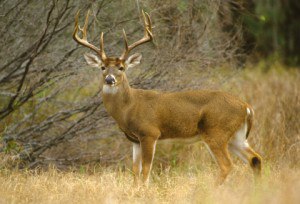What Enables Your Business to Survive Today Might Kill it Tomorrow
 A few years ago, a professor of mine was driving down a country road, when all of a sudden a deer jumped out of nowhere, and landed right in front of the car.
A few years ago, a professor of mine was driving down a country road, when all of a sudden a deer jumped out of nowhere, and landed right in front of the car.
And then lay motionless in front of the car.
My professor was puzzled why a deer would try to cross the road right at the moment he was passing - no cars in front of him, no cars behind him.
If only that deer had been a little more patient, it would still be alive today!
So my professor decided to do some research and figure out why the deer had such poor judgment when it came to crossing the road. What he found was very surprising - turns out that deer aren't necessarily dumb creatures, they're just creatures of habit. And that habit will save them in one situation, and kill them in another.
Why do deer jump in front of cars?
Deer are prey to several animals, and they've learned how to survive out there in the wild.
The first thing deer will try to do when they suspect a predator approaching is to try and not draw any attention. They have discovered that if they stand absolutely still, there's a chance that the potential predator might not even notice them, and just move along; deer will be still until they are sure that they have either been spotted, or the coast is clear.
If they sense that they have been spotted, and a predator is coming right for them, then the deer's only chance of survival becomes their ability to outrun their attacker. Although deer are fast, there are other animals that are faster - so deer can't rely on their speed alone. They have to throw in the element of surprise by darting off in different directions.
So when a deer sees your car driving down a country road, it will stand absolutely still until it can determine what's going on. It doesn't know if you're a predator, if you've spotted it, or if you're going to keep heading toward it. But when you continue to approach the deer, it figures that it's been spotted and that you're going right for it - its habits kick in, and it darts off in a random direction in an effort to escape.
Sometimes that direction is off in the woods, and sometimes that direction is right in front of your car.
Good strategy depends on the situation
It's interesting how in one situation, a deer's habit will save its hide, while in another situation, that very same habit will lead to its demise.
I think that same principle applies to business strategy - in one situation, a strategy might lead to great success, while in another situation that very same strategy will lead to total disaster.
A recent Wall Street Journal article shared a study that revealed how high-power people are oblivious to risk - a great strategy in some scenarios (e.g. Steve Jobs and Apple), and disastrous in others (e.g. the collapse of the global economy).
Another strategy that comes to mind is not paying attention to what consumers say they want. The co-founder of Sony ignored the research when it indicated that the Walkman wasn't something consumers wanted. He made it anyway and was famously quoted as saying, "We don't ask consumers what they want.
They don't know. Instead we apply our brain power to what they need, and will want, and make sure we're there, ready." That strategy worked amazingly well in the Walkman situation, but what about when they pushed forward with the music subscription service, Pressplay?
A prevailing strategy now is almost the complete opposite - start lean and let customers tell you what they would like so that you build a product they want to use. This strategy is working very well in the software industry, but if it were followed by Sony, the Walkman might not have initially been developed.
The success or failure of a strategy depends on the situation.
What should your strategy be?
I don't know what your strategy should be - I only know that when you're developing your strategy, you will need to learn from observation, as well as from your experiences and the experiences of others.
But what's the best way to learn from past experiences?
If your business, or a similar business, had a bad experience with a strategy, does that mean that you should avoid that same strategy forever?
No, it doesn't.
Just because one deer jumped in front of a moving car doesn't mean that all deer everywhere need to stop their current strategy that works so well 95% of the time. It just means that when the deer are next to a road, and a car comes down the road, they should just sit tight. The car isn't coming for them, so there's no need to take off running in a random direction - just keep grazing.
Now this also works the other way around. If your business, or a similar business, had a great experience with a strategy, that doesn't mean that you should just blindly adopt it going forward. You need to pay attention to the scenario in which the strategy was implemented, otherwise you might think that sitting tight is the best approach when a pack of wolves is approaching.
What works in one situation doesn't always work in another situation.
Don't be a copy cat
So when you're learning from your experiences, or the experiences of others, it's critical that you understand the substance of the strategy, as well as why the strategy brought success or ended in disaster.
If you just copy what you, or others like you, did before, and don't modify your strategy to fit the situation, you're going to eventually get hit by a car. Because what worked yesterday in the forest may not work tomorrow on the road.
Just ask my professor.
About jdevore
Jonathan (Jay) DeVore is the Director of Marketing at Blue Mango Learning Systems, developers of ScreenSteps. He graduated from Brigham Young University with a BS in Accounting, and is a licensed CPA in the state of Virginia. Right after graduation, he worked for his dad's private medical practice in Pasadena, CA auditing the efficiency of billing and collections. After 9 months of living in the golden state, he moved his family to Virginia to begin working at PricewaterhouseCoopers (PwC). As an accountant at PwC, he actually did very little number crunching (which surprised him), and instead audited government information systems for compliance with government requirements (e.g. NIST 800-53). During his time with the Big 4 Accounting Firm, he helped large organizations improve their documentation both from a compliance perspective and instructional perspective. His favorite aspect of work was training/teaching, so when Greg and Trevor approached him with an opportunity to create educational content for ScreenSteps, he jumped at the chance. Jonathan lives in Northern Virginia with his wife and children, and enjoys the beautiful weather the D.C. area offers 9 months out of the year.


